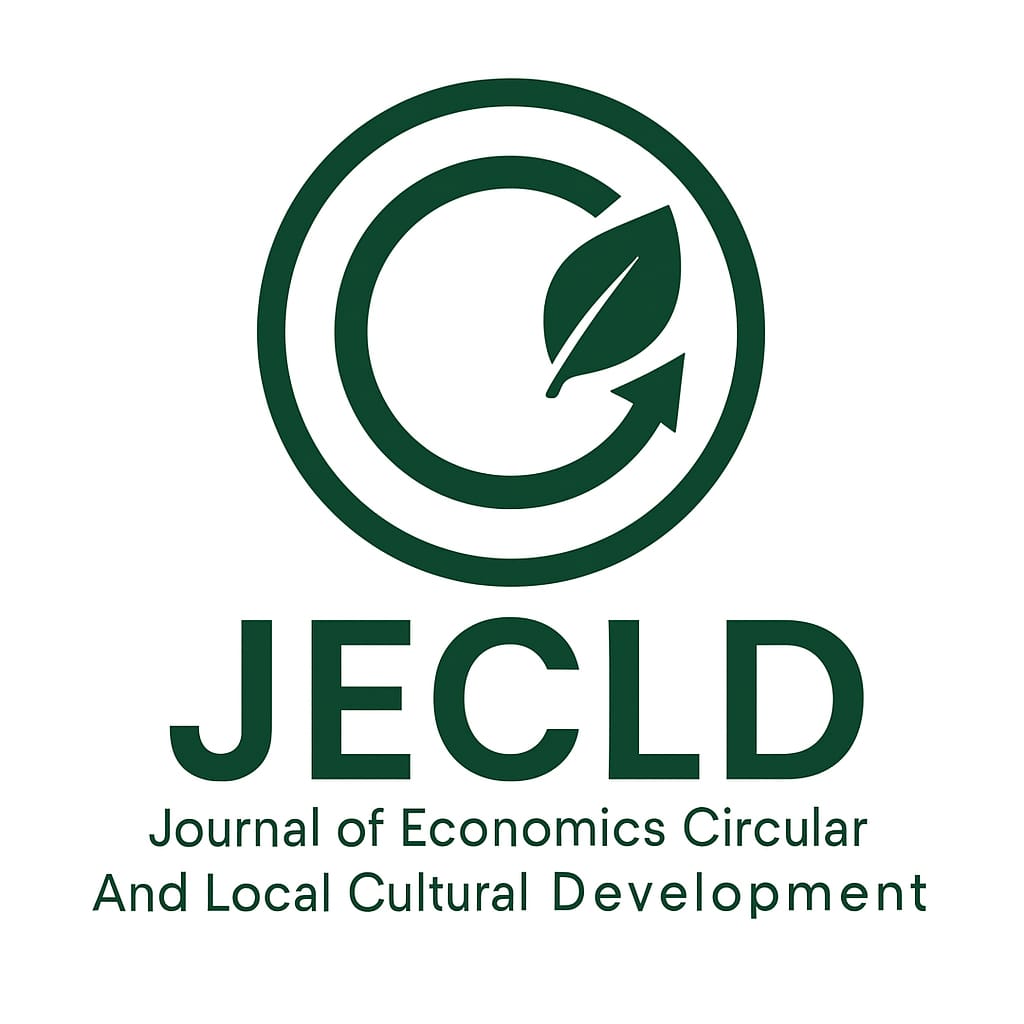
The Journal of Circular Economics and Local Cultural Development (JCECD) invites original research articles, review articles, and short communications that contribute to the understanding and application of circular economy principles within the context of local cultural development. Submissions should be well-researched, clearly written, and adhere to the highest ethical standards.
Originality: Manuscripts must be original, unpublished works, and not under consideration for publication elsewhere.
Language: Submissions are accepted in English. Authors are responsible for ensuring high linguistic quality. If English is not your first language, please consider having your manuscript proofread by a native English speaker or a professional editing service before submission.
Word Count:
Research Articles: Typically 5,000-8,000 words (including abstract, references, tables, and figures).
Review Articles: Typically 8,000-10,000 words.
Short Communications: Up to 3,000 words.
File Format: Manuscripts should be submitted as Microsoft Word (.doc or .docx) files.
Manuscripts should be organized in the following order:
Title: Concise and informative, accurately reflecting the content of the manuscript.
Authors' Names and Affiliations: Full names of all authors, followed by their institutional affiliations (department, university/organization, city, country).
Corresponding Author: Full name, email address, and ORCID ID (if available) of the author responsible for correspondence.
Abstract: A concise summary of the research (maximum 250 words) including the purpose, methodology, key findings, and main conclusions.
Keywords: 3-5 relevant keywords that are not present in the title, separated by semicolons.
Introduction:
Provide background information and context for the study.
Clearly state the research problem, objectives, and significance of the study within the scope of circular economics and local cultural development.
Conclude with a clear statement of the research questions or hypotheses.
Literature Review:
Critically discuss existing literature relevant to your topic.
Identify gaps in previous research that your study aims to fill.
Build a theoretical framework or conceptual model if applicable.
Methodology:
Describe the research design (e.g., qualitative, quantitative, mixed-methods).
Explain the participants/sample selection, data collection methods, and instruments used.
Detail the data analysis procedures.
Address ethical considerations (e.g., informed consent, confidentiality).
Results:
Present your findings clearly and concisely, using text, tables, and figures as appropriate.
Avoid interpreting results in this section; save that for the discussion.
Discussion:
Interpret the results in relation to the research questions/hypotheses and existing literature.
Discuss the implications of your findings (theoretical, practical, policy).
Acknowledge the limitations of your study.
Suggest directions for future research.
Conclusion:
Summarize the main findings and their significance.
Reiterate the contribution of your study.
Avoid introducing new information.
Acknowledgements (Optional):
Acknowledge individuals, institutions, or funding bodies that supported the research.
Conflict of Interest Statement:
Authors must declare any potential conflicts of interest. If there are none, state: "The authors declare no conflict of interest."
References:
All references cited in the text must be included in the reference list.
JCECD uses the APA 7th Edition style for citations and references. Please ensure strict adherence to this style.
Examples:
Book: Porter, M. E. (1985). Competitive advantage: Creating and sustaining superior performance. Free Press.
Journal Article: Geissdoerfer, M., Savaget, P., & Evans, S. (2017). The Cambridge business model innovation process: A tool for circular economy. Procedia CIRP, 69, 760-765. https://doi.org/10.1016/j.procir.2017.06.196
Website: Ellen MacArthur Foundation. (2019). What is the circular economy? Retrieved from https://www.ellenmacarthurfoundation.org/circular-economy/what-is-the-circular-economy
Placement: Insert tables and figures directly into the text where they are first cited.
Numbering: Number tables and figures consecutively (e.g., Table 1, Figure 1).
Titles/Captions: Provide clear, concise, and descriptive titles for tables (above the table) and captions for figures (below the figure).
Resolution: Ensure figures are of high quality (at least 300 dpi for images).
Authorship: All named authors must have made substantial intellectual contributions to the research and approved the final manuscript.
Plagiarism: JCECD uses plagiarism detection software. Any form of plagiarism, including self-plagiarism, will lead to rejection or retraction. (Refer to our Plagiarism Policy).
Data Integrity: Authors are expected to present accurate and truthful data.
Human/Animal Subjects: If the research involves human participants or animals, authors must state that ethical approval was obtained from the relevant institutional review board/ethics committee and that informed consent was obtained (for human participants).
Online Submission: Manuscripts must be submitted through JCECD's online submission system ([Insert Link to Online Submission System, e.g., OJS Link]).
Cover Letter: A cover letter should accompany the submission, stating that the manuscript is original, has not been published elsewhere, and is not under consideration by another journal. It should also briefly outline the significance of the study.
Review Process: All submitted manuscripts undergo a rigorous double-blind peer-review process.
Information regarding Article Processing Charges (APCs) can be found on the journal's website under the "Article Processing Charges" section. ([Insert Link to APC Policy])
For any inquiries regarding submissions or the journal's policies, please contact the Editorial Office at [Insert Journal Email Address].

 |
|
